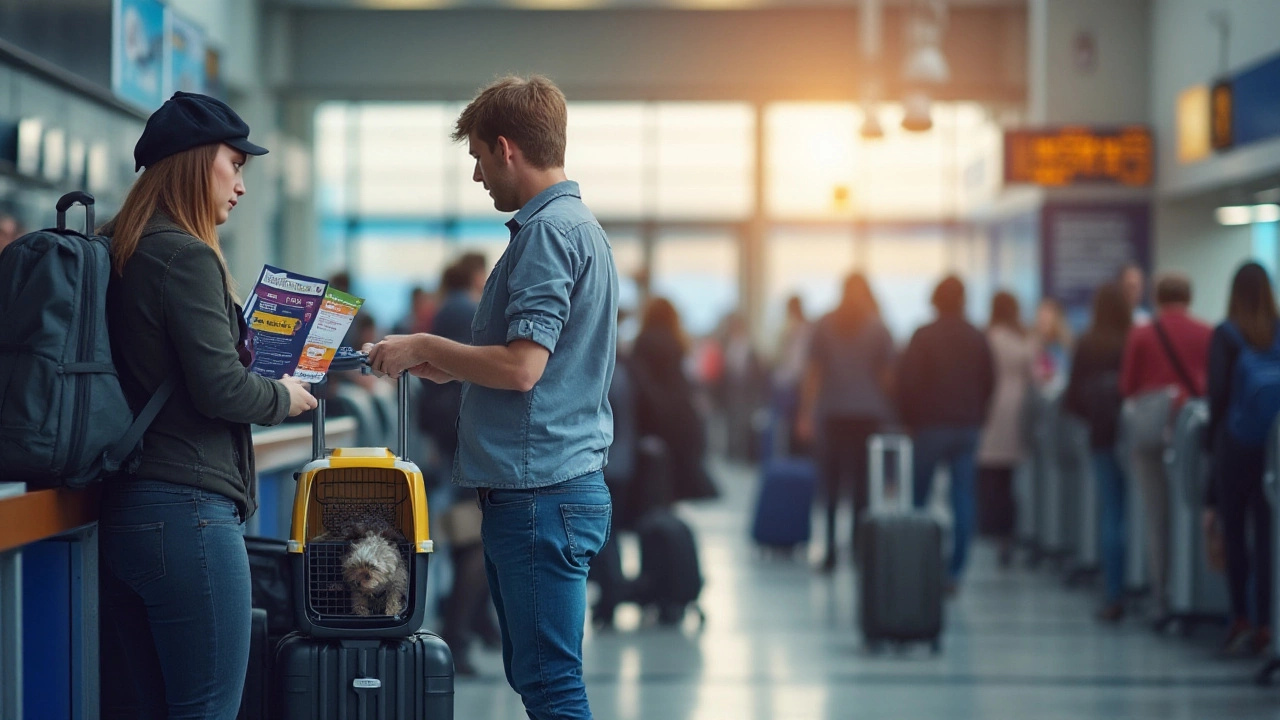Airlines & Dogs: Simple Tips for a Stress‑Free Flight
If you’ve ever wondered whether your dog can hop on a plane, you’re not alone. Many pet owners panic at the word “airline” because they think it’s a maze of rules and fees. The good news is that with a little planning you can turn a scary trip into a smooth adventure for you and your pup.
Choosing the Right Airline and Crate
First step: pick an airline that actually welcomes dogs. Most major UK carriers let small dogs in the cabin if the carrier fits under the seat, while larger dogs travel in the cargo hold. Look for airlines that offer a pet‑travel guarantee or have a good on‑time record for pet shipments – a delayed flight means a stressed dog.
Once you know which airline works, get a crate that meets IATA standards. The crate should be sturdy, have ventilation on three sides, and let your dog stand, turn around, and lie down comfortably. Measure the crate against the airline’s size limits – a crate that’s a few centimeters too big will be rejected at check‑in.
Don’t forget the label. Write your contact info in bold on a waterproof tag, and attach a “Live Animal” sticker. This small step saves a lot of hassle if the bag gets misplaced.
Day‑of Flight Checklist
Wake up early, give your dog a short walk, and keep the morning calm. A bathroom break before you head to the airport reduces the chance of a nervous bathroom emergency on the plane.
Pack a pet travel kit: a collapsible water bowl, a few treats, a favorite chew toy, and a blanket that smells like home. If you’re flying in‑cabin, keep the bowl empty until you’re past security – you’ll need to toss the water when the X‑ray machine runs.
Visit the vet a few days before the flight. You’ll need a health certificate stating your dog is fit to fly and up to date on vaccinations. Some airlines also require a microchip scan, so double‑check their list.
When you get to the airport, head straight to the airline’s pet desk. Present the health certificate, the crate, and any fees. Most airlines let you watch the cargo hold from a window, which can calm both you and your dog.
During the flight, keep the crate under the seat and avoid opening it unless absolutely necessary. Talk to your dog in a soft voice; the sound of your voice can reassure them even when they can’t see you.
After landing, grab your dog as soon as the seat belt sign turns off. Offer water and a bathroom break outside the terminal. Most dogs feel better once they stretch their legs.
Traveling with a dog isn’t rocket science – it’s about matching the right airline, using a proper crate, and staying organized on the day of travel. Follow these steps and you’ll turn a potentially stressful experience into a simple, happy trip for both of you.

Top Airlines with Pet Travel Restrictions
Traveling with pets can be a complex process, especially when it involves flying. While some airlines are pet-friendly, many have strict policies on furry companions in the cabin. Understanding which airlines do not allow pets is crucial to planning your journey smoothly. This article provides detailed information on pet restrictions across various airlines, offering practical tips for travelers accompanied by their four-legged friends.
View more